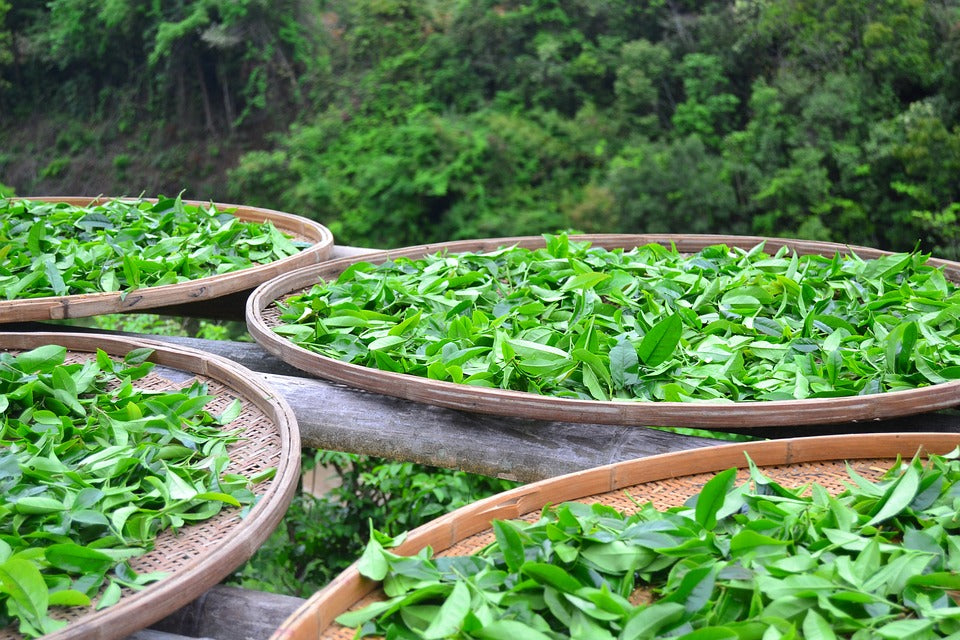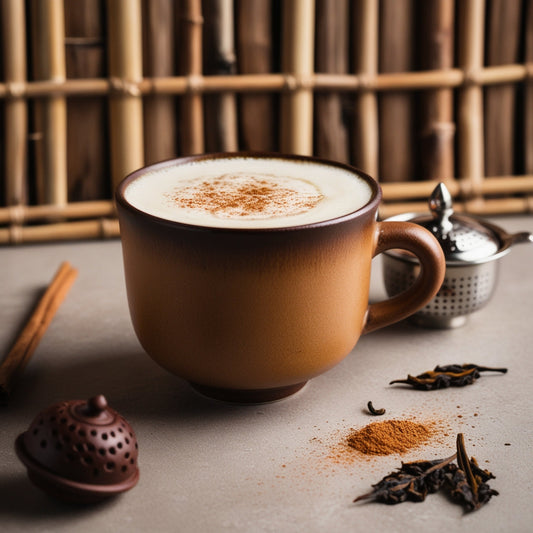Introduction
When it comes to tea, enthusiasts often find themselves torn between the rich, earthy notes of Pu-erh tea and the delicate, floral tones of Oolong tea. Both varieties offer a unique journey through taste and tradition, but which one stands out in terms of health benefits, environmental impact, and cultural significance? We'll delve deep into the fascinating worlds of Pu-erh and Oolong tea, exploring their origins, production processes, and the countless reasons why they have become beloved staples in tea culture across the globe. You'll discover insights that might just help you decide which brew deserves a place in your cup.
Table of Content
- Introduction
- What is Pu-erh Tea?
- What is Oolong Tea?
- Cultural Significance
- Environmental Impact
- Psychological Benefits
- Why Pu-erh tea is best?
- Conclusion
What is Pu-erh Tea?
Pu-erh tea, originates from China’s Yunnan province and named after the town where it was first developed, undergoes a unique post-fermentation process. The method involves fermenting the leaves with microbes after drying and rolling them, allowing the tea to age and improve over time, much like fine wine, with some leaves retaining their freshness for up to fifty years. Made from the ancient Dayeh variety of the Camellia sinensis plant, Pu-erh tea offers a rich and complex flavor profile that varies based on environmental factors.
Historically, Pu-erh tea played a significant role in trade during various Chinese dynasties and became highly prized for its ability to improve with age and aid in digestion. Today, Pu-erh tea remains a valuable commodity, appreciated for its health benefits and distinctive taste. There are two main types of Pu-erh tea: Raw (sheng) and Cooked (shou), each with its unique processing method and flavor. Brewing Pu-erh tea involves specific techniques to enhance its flavor, such as using high-quality leaves, rinsing them, and steeping multiple times. The caffeine content in Pu-erh tea diminishes with age, making older teas less caffeinated than younger ones.

What is Oolong Tea?
Oolong tea, distinct from black and green teas, undergoes partial oxidation, resulting in a unique flavor profile that can range from fresh and green to rich and malty, depending on the level of oxidation. Oolong falls between these two, with oxidation levels varying from 8% to 80%. This tea also features traditional rolling, twisting, or curling techniques, which influence its final appearance and flavor. China and Taiwan originated oolong teas, which are prized for their diverse flavors and artisanal production methods. The caffeine content in oolong tea generally falls between that of black and green teas, varying based on oxidation levels and processing techniques. People in Asia highly regard oolong tea and often organize competitions to honor the craftsmanship of tea producers.
Cultural Significance
Cultural Significance of Pu-erh Tea
Pu-erh tea holds deep cultural importance, especially in China, where it originates. In the Yunnan province, where Pu-erh tea comes from, locals have valued it for its medicinal properties and its role in daily life. Traders used Pu-erh tea as a crucial part of the Tea Horse Roads trade routes, bartering it for horses and highlighting its economic significance. People often associate this tea with traditional Chinese medicine, believing it aids digestion, reduces cholesterol, and promotes weight loss. Over centuries, Pu-erh has become a symbol of social status and a valuable commodity for aging and collection. In modern times, people continue to celebrate it in tea ceremonies and regard it as a treasure in Chinese households, representing heritage and wellness.
Cultural Significance of Oolong Tea
Oolong tea, with roots in both China and Taiwan, holds a prestigious place in these cultures. In China, people intertwine the tea culture surrounding Oolong with Gongfu tea ceremonies, emphasizing the art of brewing tea with precision and respect. They also celebrate this tea in numerous Chinese festivals and social gatherings, symbolizing hospitality and tradition. In Taiwan, people consider Oolong tea a national treasure, with various regions producing distinct flavors and styles. Taiwanese Oolong competitions showcase the expertise of tea masters and contribute to the cultural pride associated with this tea. Both in China and Taiwan, Oolong tea represents a blend of artistry and tradition, reflecting the cultural heritage and the meticulous craftsmanship involved in its production.

Environmental Impact
Environmental Impact of Pu-erh Tea
The cultivation and production of Pu-erh tea significantly impact the environment. Farmers often grow Pu-erh tea in the mountainous regions of Yunnan, where they use traditional methods that emphasize ecological balance. These methods include cultivating tea trees in diverse forests, which helps maintain biodiversity and protects the ecosystem. However, increased demand for Pu-erh tea has led to some negative environmental effects. Deforestation for expanding tea plantations can disrupt local wildlife habitats and reduce biodiversity. Additionally, the use of chemical fertilizers and pesticides in some plantations can contaminate soil and water sources. The transportation and packaging of Pu-erh tea also contribute to its carbon footprint. Although some producers are making efforts to adopt more sustainable practices, such as organic farming and eco-friendly packaging.
Environmental Impact of Oolong Tea
The production of Oolong tea, particularly in regions like China and Taiwan, also has notable environmental implications. Oolong tea cultivation requires specific climatic conditions, leading to tea plantations often being established in hilly or mountainous areas. The traditional farming techniques used in these regions can help preserve the natural landscape and promote biodiversity. However, the increasing demand for Oolong tea has led to some environmental challenges. Intensive farming practices, including the use of chemical fertilizers and pesticides, can harm the soil and local water supplies. Additionally, the conversion of forests into tea plantations can result in deforestation and habitat loss for native species. To mitigate these impacts, some Oolong tea producers are adopting sustainable farming methods, such as organic cultivation and integrated pest management, which reduce the environmental footprint of tea production.
Psychological Benefits
Psychological Benefits of Pu-erh tea
Pu-erh tea contains caffeine but won't make you feel anxious. Instead, it can help reduce stress and aid in relaxation due to its anti-inflammatory properties when dealing with minor aches and pains. The phyto-chemicals GABA and theanine in pu-erh tea have been linked to lower stress levels. These compounds boost melatonin production, which can improve sleep quality and promote a calmer throughout the day.
Pu-erh Pharmacological Elements
Vitamins B1, B2, C and E, potassium, phosphorous, calcium, magnesium, aluminium, lysine, arginine, histidine and cystine, linoleic and linolenic acids and trace amounts of zinc, sodium, nickel, iron, beryllium, sulphur and fluorides.
Psychological Benefits of Oolong tea
While excessive caffeine can make you anxious, oolong tea has just the right amount to boost your alertness. It not only helps reduce stress levels but also shows potential in preventing Alzheimer's disease. Drinking oolong tea might be an excellent way to maintain mental clarity and concentration.
Oolong Pharmacological Elements
Caffeine, flavonol, tea polyphenol, vitamin C and E, catechins, carotene and minerals such as zinc, selenium and florin.
Why Pu-erh Tea is best?
Pu-erh tea stands out as the best choice due to its unique post-fermentation process, especially in the Shou Pu-erh variety, which gives it a distinct earthy flavor highly prized among tea enthusiasts. This tea undergoes a meticulous process involving withering, oxidation, and heat treatment, similar to Oolong tea, but with an additional step of microbial fermentation after drying and rolling the leaves. This post-fermentation not only enhances the complexity and depth of its flavor but also allows the tea to improve with age, much like fine wine. Moreover, unlike Oolong tea, which contains tannic acid making it less advisable to drink at night, Pu-erh tea can be enjoyed at any time of day. This flexibility combined with its rich flavor and aging potential, makes Pu-erh tea a superior choice for those seeking a unique tea experience.
Conclusion
Explore the rich traditions and health benefits of Pu-erh and Oolong teas to discover which brew resonates most with your palate and lifestyle. Whether you're drawn to the earthy depth of Pu-erh, celebrated for its aging potential and digestive benefits, or the refined flavours of Oolong, known for its cultural significance and diverse profiles, each tea offers a unique journey into the world of tea culture. Embrace the artistry and heritage behind Pu-erh tea, and elevate your tea-drinking experience with every sip. Choose Pu-erh tea savour the timeless charm of this remarkable beverage.
Q. What distinguishes Pu-erh tea from other types of tea?
A. Pu-erh tea is unique due to its post-fermentation process, which involves microbial fermentation after the leaves are dried and rolled. This process allows Pu-erh tea to age and improve over time, much like fine wine. It also comes in two main types: raw (sheng) and cooked (shou), each with distinct processing methods and flavours.
Q. How does Oolong tea differ from black and green teas?
A. Oolong tea undergoes partial oxidation, resulting in a flavor profile that ranges from fresh and green to rich and malty, depending on the level of oxidation. This places Oolong tea between black tea, which is fully oxidized, and green tea, which is minimally oxidized. The traditional rolling, twisting, or curling techniques used in Oolong tea production also contributes to its unique appearance and flavor.
Q. What is the cultural significance of Pu-erh tea in China?
A. Pu-erh tea holds deep cultural importance in China, particularly in the Yunnan province where it originates. It has been a crucial part of trade routes, known as the Tea Horse Roads, and is associated with traditional Chinese medicine, believed to aid digestion and promote weight loss. Pu-erh tea is often celebrated in tea ceremonies and is a symbol of social status, heritage, and wellness.
Q. What environmental impacts are associated with the production of Pu-erh and Oolong teas?
A. The production of Pu-erh tea, often grown in the mountainous regions of Yunnan, can impact the environment through deforestation and the use of chemical fertilizers and pesticides. Similarly, the increasing demand for Oolong tea has led to environmental challenges such as habitat loss and soil and water contamination due to intensive farming practices. However, some producers are adopting sustainable methods to mitigate these impacts.
Q. Why might someone prefer Pu-erh tea over Oolong tea?
A. Someone might prefer Pu-erh tea over Oolong tea due to its unique post-fermentation process, which enhances its flavor complexity and allows it to age like fine wine. Pu-erh tea can be enjoyed at any time of day, as its caffeine content diminishes with age, making it less likely to cause jitters. Its rich, earthy flavor and potential health benefits, such as aiding digestion and reducing cholesterol, make Pu-erh tea a highly prized and versatile choice.






